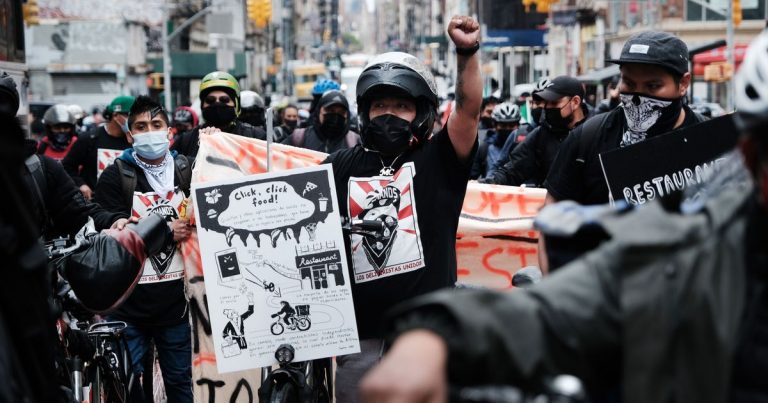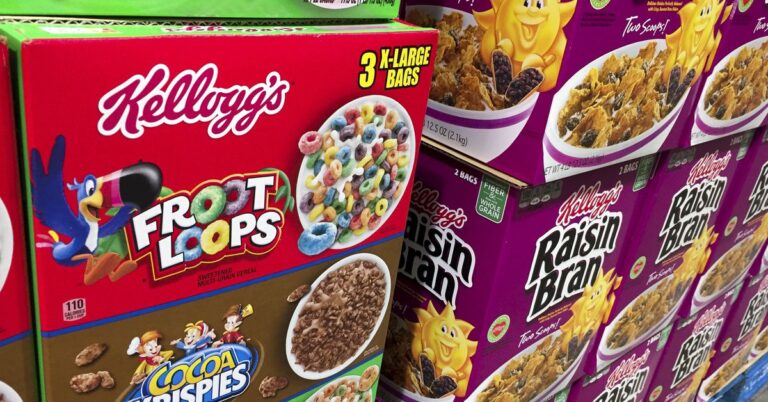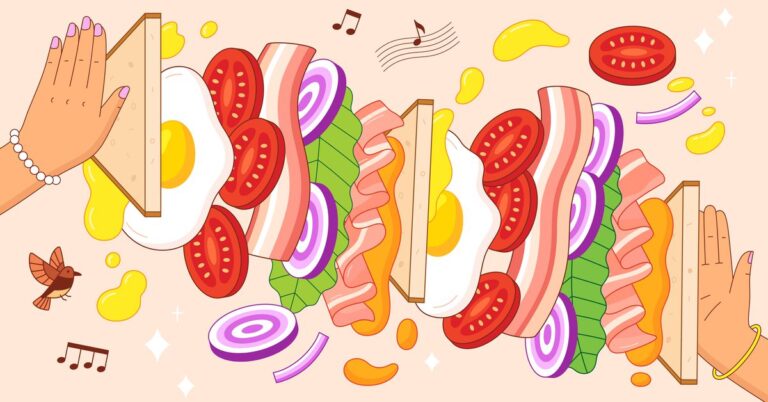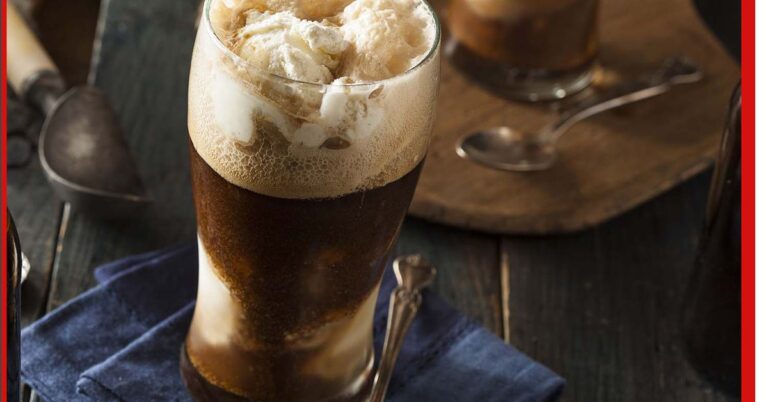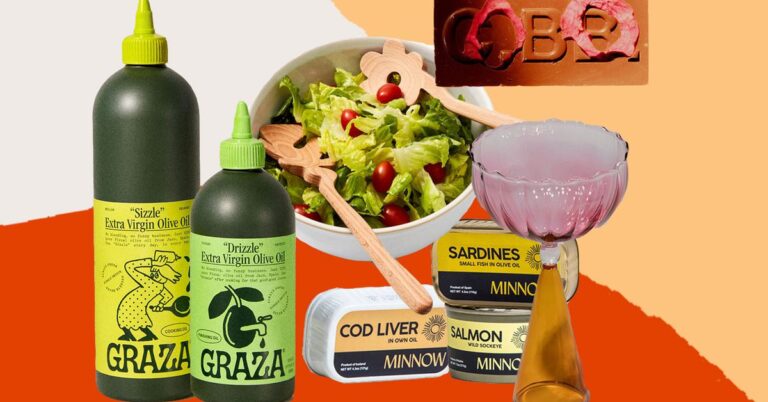Investigating the Origins of Joanna Gaines’s Peanut Butter Brownies Recipe
It is important that I begin by assuring you that Joanna Gaines’s brownies are delicious. More than delicious, actually, they are perfect. Like some of my favorite pastries, they benefit from a slight chill, which in this case further defines the layers; the frosting becomes like a hardened chocolate shell, the peanut butter middle layer remains creamy, and the foundation of brownie goes from chewy up top to pleasantly crumbly where it meets the pan. Just thinking about a bite, let alone taking one, leaves me breathless. Is there a more harmonious confectionary relationship than the one between peanut butter and chocolate? This recipe provides more proof — after Reese’s cups, any sort of no-bake peanut butter bar or cookie, and the delectable midwestern Buckeye — that no, there is not.
That such a perfect creation came from Fixer Upper’s Joanna Gaines — Waco’s Shiplap Queen and co-creator of Silos at Magnolia Market (more popular with tourists in Texas than the Alamo) — had me shaken and skeptical. At the risk of questioning Gaines’s bona fides, Fixer Upper’s aesthetics tend more towards a commercialized and phony down-homey-ness in which kitchens are decorated in cold grays and exposed lumber, with walls covered in giant clocks or signs from Gaines’s Target line that yearn to be seen as antiques. But here are these mouth-watering, transportive peanut butter brownies, which taste like they came from a handwritten recipe card found in the organized chaos of a grandma’s kitchen, with decades-old appliances that only she knows how to operate.
I first saw the brownies when they occupied the hero spot on NYT Cooking’s homepage carousel. Beyond the chewy, chocolatey, peanut buttery allure, I was struck by how easy they looked to make. It is not a perfectionist’s recipe; there are no sharp lines of a more intricately crafted dessert bar, or flaky, easy-to-fuck-up pastry. In the photo, the peanut butter oozes out of the square, and the top layer of chocolate bulges unevenly, as though it was spread in a hurry by someone less invested in making something beautiful than getting a bite into their mouth. This was a recipe for me, I thought, my jaw on the floor; so I clicked, at which point my jaw remained on the floor for an entirely different reason. “Joanna Gaines of Magnolia Table in Waco, Texas, developed this recipe for a layered treat that combines the best of a brownie, a candy bar and an ice cream sandwich,” read the Times’ introduction.
As a fan of both celebrities and cooking, I must say I tend to find the intersection of those two things reliably annoying (despite the fact that I own several celebrity cookbooks), so the implication that Joanna Gaines should be a trusted source for recipes simply because she was known for tearing down kitchens walls felt questionable and instantly bothered me. Take a look at a social media-savvy celebrity of any fame level and you’ll see proof that we have assigned a sort of ill-conceived pseudo-transitive property to famous people in our society. Twitter users are repeatedly trying to tell me Stanley Tucci is some kind of genius for making a negroni even though it’s just three liquids you stir together in a cup. Reese Witherspoon seems to think her twang makes her a biscuit expert despite the fact that every biscuit recipe is the same exact level of good unless you’re my late grandmother, in which case they’re perfect and inimitable. We’ve been conditioned to believe that just because a celebrity (let’s call them C) is good at the thing they became famous for, be that acting or singing or saying things on a reality show that can be clipped and used out of context to the delight of people in your group chat (let’s call that f) that they should also be good at any number of other entirely unrelated things, like designing athleisure or recommending books or cooking meals we’d also probably enjoy (skills we can call g). But here was the New York Times of all places, screaming at the top of their lungs, that yes, Joanna Gaines equals both f and g. Well, I thought, we’ll C about that!
Perhaps it was unfair of me to expect so little — or, more accurately, something so specific — from a celebrity, but my eyebrow’s raised position was justified once I scrolled to the comments section. There, near the top of the Times’ ranked list of “helpful” notes, was this writeup from a reader named VT:
I have been making this recipe since I found it in the 1992 Southern Living as Frosted Peanut Butter Brownies.
Absolutely the best recipe! Only difference is the original recipe calls for a 12 oz jar of chunky peanut butter.
It’s a personal preference as both are good. Just don’t overcook the bottom layer. These brownies can be made a week ahead and stored in the refrigerator. Best eaten at room temperature. They also freeze beautifully.
Though I was thrilled to see something resembling proof that the recipe was not Gaines’s invention, an acute awareness of my susceptibility to confirmation bias led me to apply the same doubt I thrust upon her to the anonymous commenter. So I found and purchased a used copy of Southern Living’s hardcover collection of every recipe published in its 1992 issues. A week or so later, it arrived at my doorstep, looking brand-new, apart from an inscription on the inside cover written in tight, formal cursive that reminded me of my grandmother’s hand. “To: Robin / From: Fay,” it read alongside a chapter and verse from the bible: Job 23:10-12. I then flipped to the index, and in a “Cookies” subsection labeled “Bars and Squares,” I found it: “Brownies, Frosted Peanut Butter. Page 272.” The recipe isn’t quite identical — Southern Living’s developers called for margarine instead of butter, chunky PB as opposed to creamy, and nearly double the sugar — but the similarities, down to the ingenious idea of melting marshmallows into the chocolate, are striking. Did Joanna Gaines steal this recipe and claim it as her own?! Maybe!
Thanks to an overabundance of time alone with my thoughts — a gift or curse of the pandemic, depending on the day — what I had now was a full-blown obsession, and one that would soon gain strength thanks to streaming culture and a big old chunk of luck. In January of 2021, Discovery Inc. launched Discovery+, a streaming service that offers access to shows from the libraries of networks like HGTV, Food Network, TLC, and Discovery Channel. Beyond those robust archives, it’s also the future streaming home of Magnolia Network, a Chip and Joanna Gaines-centric rebranding of the cable channel formerly known as DIY Network. To build up hype for its summer 2021 launch, Discovery+ teased a handful of those shows on the service, including a cooking show hosted by Joanna herself, Magnolia Table. As a fan of both cooking television and white noise, the show was instantly pleasurable to me — in large part because her lack of experience, the “Stars Are Just Like Us” of it all, is part of the concept — but when she began a segment with an introduction to peanut butter brownies, it became something more: research.
“There’s a version of this in my second cookbook, and a friend actually shared this recipe with me. So we call these Lucy’s Peanut Butter Brownies,” Gaines says in her sun-drenched Texas kitchen. (Isn’t it funny that this family successfully changed the national reputation of Waco from the home of a botched FBI raid to the platonic ideal of folksy, kid-friendly American interior design? Just something to think about.) Anyway, thanks to Gaines’s comment, I bolted to my Brooklyn Public Library app to find a copy of Magnolia Table, Volume 2. To my surprise, or maybe not, a copy was available for immediate check-out, and I quickly flipped my thumb to the dessert section. In her introduction to Lucy’s Peanut Butter Brownies, she offers the family friend even more credit.
“‘Best Friend Brownies’ is what my friend’s mom, Lucy, calls this sweet treat,” Gaines writes. “Anytime a friend of hers is feeling down or could just use a little something sweet, she makes a batch. Over the years, many of her friends have asked her for the recipe so they could do the same. I’m grateful to share it here, as I am convinced there is no better match than peanut butter and chocolate.” With that, straight from Gaines’s mouth, I now had three potential origin stories: a) The recipe trickled down from Southern Living to Lucy or someone in Lucy’s direct orbit, b) The recipe trickled up from Lucy or someone in Lucy’s direct orbit to Southern Living, or c) the recipe was developed by multiple different people coincidentally, because combining chocolate with peanut butter via the science of baking is by no means novel. While I now knew how the recipe came to Joanna, I knew it would be next to impossible to definitively confirm how it made its way to Lucy. Oh well! That’s life. But one answerable question did remain: Why was Gaines credited as the “developer” in the Times, when she’d been so open about Lucy’s authorship elsewhere? I reached out to food reporter Julia Moskin, who wrote the recipe’s introduction, to find out.
Moskin responded to my questions via email, and chalked the whole thing up to semantics. “The definition of ‘developing’ a recipe is hard to pin down, even in the culinary world,” she wrote. “In the cookbook, Joanna Gaines refers to what she does as ‘recipe development’ even though she’s clear that this particular recipe was handed down from a friend. In that topnote, I was reaching for an alternative to ‘created.’” Got it! Great. But despite Joanna’s acknowledgment that the recipe was not her own, was she in violation of the law for publishing a recipe that was nearly identical to one published some three decades ago? This was a question for a lawyer, so I called one up.
Corinne Chen is an attorney at New York City-based firm Romano Law who specializes in IP and trademark law, and helped me understand that phrases like “recipe development” are used because it is nearly impossible to claim authorship over a recipe, at least in the eyes of the law. “The reason recipes are not copyrightable is because [they’re] an idea and a process,” Chen told me over the phone last year. “You would think, Oh, I’m writing down the ingredients! I’m writing down how to do it step by step! But those are seen more as instructional… and not really deemed as creative.” What is copyrightable, she explained, is creative expression — the personal histories, photos, and illustrations that accompany a recipe in your favorite cookbook or on a food-centric Instagram feed. And in many cases, isn’t that what you’re really looking for when choosing a cookbook to buy or a recipe Instagram account to follow? Magnolia Table: Volume 2 is as much about the recipes as it is about aesthetics and vibes. This is a book for people who want to emulate the Gaines family — from their big marble island, to the way Joanna never hides her contempt for Chip, to the friendships she’s made with generous neighbors like Lucy.
Upon reaching the end of this great brownie journey, which physically took me no further than my neighborhood grocery store, I felt I’d wasted my time. Joanna Gaines is not a cookbook plagiarist, nor is she even remotely lacking when it comes to the gray area of creative attribution. The brownies ended up in her cookbook the way recipes tend to end up anywhere, floating from one satisfied and generous home chef to the next. There was nothing titillating about this story, nothing scandalous or spicy; there was only sweetness. Layers of it. Decades, even.
Eager to make yet another batch of the Best Friend Brownies (the name I decided was best) and perhaps put my own spin on the dish, I recently revisited the version published in Southern Living. This time, however, I remembered to look up the bible verse under Fay’s inscription. While I don’t fully remember the story of Job, the passage felt significant even out of context. “My feet have closely followed his steps, I have kept to his way without turning aside,” he says. “I have not departed from the commands of his lips, I have treasured the words of his mouth more than my daily bread.” Sounds to me like someone who understands the value of creative expression.
Bobby Finger is a writer and co-host of the podcast Who? Weekly. His debut novel, The Old Place, will be published this fall. Marylu E. Herrera is a Chicago-based collage artist with a focus on printmaking and collage.

